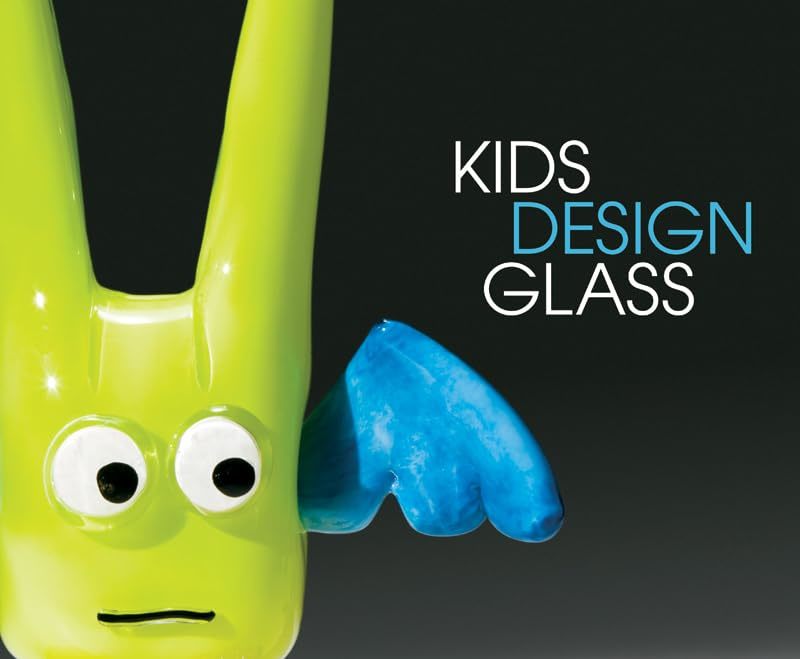Some 15 years ago, Danny Lichtenfeld, the director at the Brattleboro Museum & Art Center in Brattleboro, Vermont, was browsing the bookstore at the Seattle Art Museum when a small green creature with blue wings and googly eyes caught his eye. The charming creature adorned the cover of Kids Design Glass (University of Washington Press, 2009), which told the story of a unique program at the Museum of Glass in Tacoma, with photographs of fantastical glass creatures and essays by Ben Cobb, the hot shop director, as well as Dale Chihuly and a Harvard child psychologist who consulted on the program. Lichtenfeld was so intrigued he not only brought the book back with him to Brattleboro, but borrowed heavily from it to set up a similar program at the Brattleboro Museum & Art Center, where it debuted in 2010 under the name "Kids Design Glass Vermont" (though it was later changed to "Glasstastic," as it is known today).

"Glasstastic" closely followed the concept of the original 2004 "Kids Design Glass" program at MOG, and Lichtenfeld is frank about it as inspiration for his program. One challenge Brattleboro faced was that while the facility has long had art-making studios, there was no hot shop or glassmaking equipment. This was solved by outsourcing the actual glassmaking to area glassblowers with their own studios. As an increasing number of glassmakers were willing to realize these often challenging designs sprung from the unfettered imagination of children, the number of objects made has grown from the original 12 in 2010 compared to 20 in the 2025 exhibition, which opens on March 22nd.

The concept that Ben Cobb and his Museum of Glass colleagues hit upon, and which inspired "Glasstastic," is a relatively simple one--children around the country from grades K-6 draw a picture of an imaginary creature, submit it to the museum along with a short description, and wait. A handful of lucky kids are selected each year to have the very rare and exciting opportunity to watch their imagination come to life in front of them as a professional glassworker carefully shapes their drawing into a three-dimensional sculpture. This process is offered year-round at the Museum of Glass, and submissions are accepted from around the world. In Vermont, Glasstastic has become a biennial event. Both programs have a similarly wonderful result as an endless variety of creatures and their stories are sent in. These include everything from anthropomorphized everyday objects to mishmashes of famous fantastic beasts. According to the "Glasstastic" webpage, some of this year’s selections like to eat pizza, dance, rap, and hand out jelly.

For Lichtenfeld at least, the program no longer feels like a challenge. ‘Having done it seven times in fourteen years,” he says, “at this point everyone understands their role and has fun with it every other year.” The main challenges are those you’d expect--the artists’ occasional grappling with physical improbabilities when re-creating a design, and of course having to select a limited number of applicants from a pool that grows larger every year, with over 1,000 drawings submitted in 2024.

Credit for the idea of harnessing kids' creativity goes to the staff of the Museum of Glass, where the 2004 exhibition "Murano: Glass From The Olnick Spanu Collection" sparked discussions about the relationship between designers and glassblowers. Cobb remembers these conversations built into a larger question about what it meant to design, and who a designer could be. When the idea was first raised for a show where museumgoers could submit design ideas, the staff realized they might be up against conflicting preconceived notions about what a good art piece should look like. This prompted a shift to how children are more open to pure creative expression will little self-consciousness. Child psychologist Susan Linn suggested they set an upper age limit of 12 because that is the age where commercial influence began to show more clearly in kids’ imaginative creations.

Though "Kids Design Glass" was initially geared toward local audiences, since the winners are invited to come and witness their designs take shape in the hot shop, the program has begun to experiment with international ventures in order to expand access to the program and explore cultural differences. With the help of glassworker Antoine Pierini, the museum collaborated with the village of Biot, France once in 2014 and once in 2017. A little more paperwork was needed for the next international partnership, between the Museum of Glass and its counterpart in Shanghai, China. The Shanghai Museum of Glass’ director, Li Zhang, had to meet with the then-mayor of Tacoma in order for the collaboration to go through.
“The drawings were amazing,” Cobb says. ‘There was a lot of watercolor, and pen--not crayon like the American drawings. It was so different.”
Cobb confesses that when it’s difficult to choose between two great drawings, the description is usually the tie-breaker. “We look at the handwriting,” he says. “If the parent wrote the story for them, we can tell. We want all the cool misspellings.” This commitment to authenticity extends to the glass pieces themselves. For the most part, every detail is reproduced according to the child designer’s will- as with Jeremiah Turnberg and MOG’s Recycle Robot- but in the case of Austin Spokely and MOG’s Handy Man!, the team had to turn him down when he asked to have his spelling mistake on the handyman’s chest corrected. “We had to say no,” Cobb explained. “We had to, because we loved it.”
IF YOU GO:
Ongoing
Kids Design Glass
Museum of Glass
1801 Dock Street
Tacoma, Washington
Tel: 253-284-4750
March 22 - November 1, 2025
Glasstastic 2025
Brattleboro Museum & Art Center
10 Vernon Street
Brattleboro, Vermont
Tel: 802-257-0124




